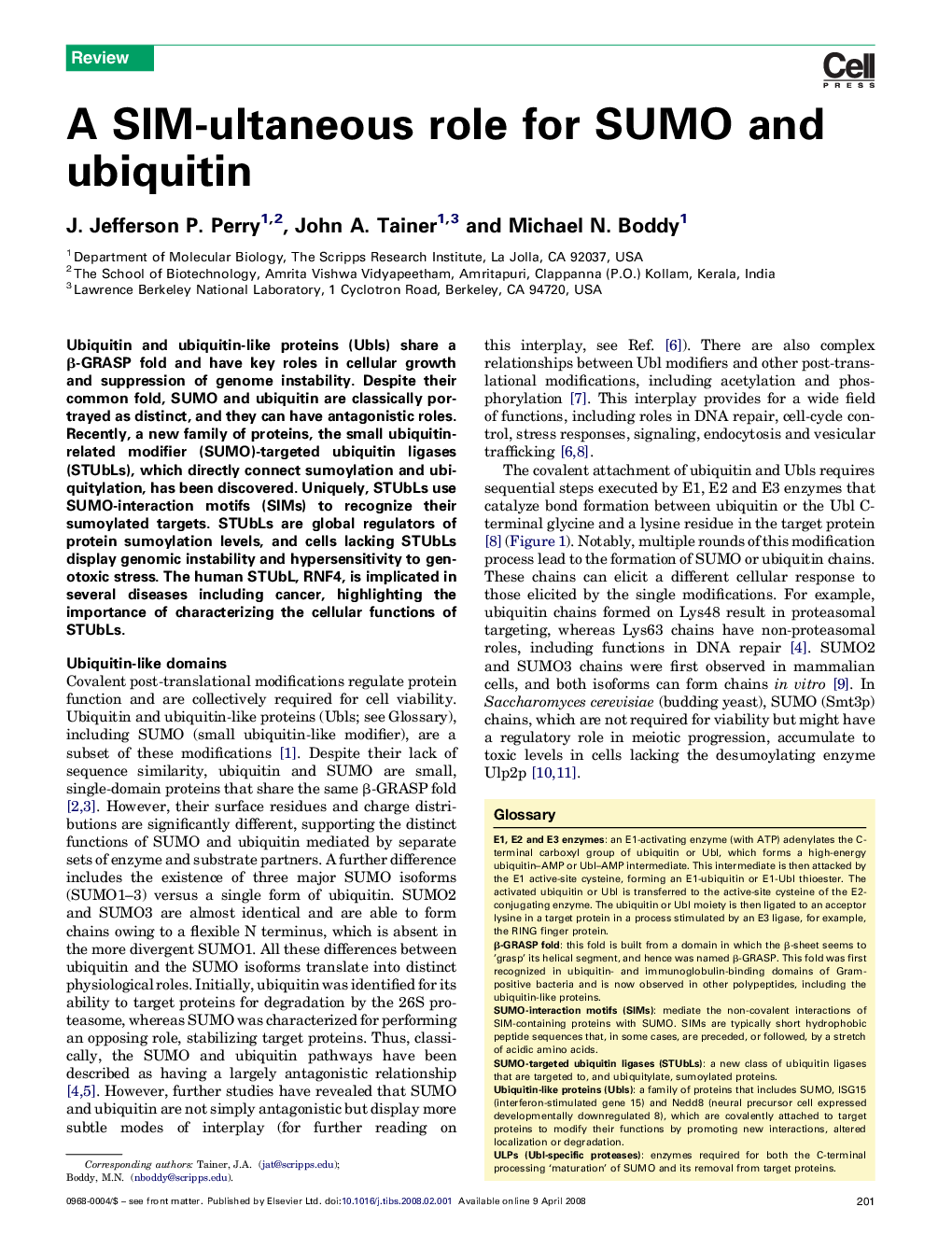| Article ID | Journal | Published Year | Pages | File Type |
|---|---|---|---|---|
| 2031761 | Trends in Biochemical Sciences | 2008 | 8 Pages |
Ubiquitin and ubiquitin-like proteins (Ubls) share a β-GRASP fold and have key roles in cellular growth and suppression of genome instability. Despite their common fold, SUMO and ubiquitin are classically portrayed as distinct, and they can have antagonistic roles. Recently, a new family of proteins, the small ubiquitin-related modifier (SUMO)-targeted ubiquitin ligases (STUbLs), which directly connect sumoylation and ubiquitylation, has been discovered. Uniquely, STUbLs use SUMO-interaction motifs (SIMs) to recognize their sumoylated targets. STUbLs are global regulators of protein sumoylation levels, and cells lacking STUbLs display genomic instability and hypersensitivity to genotoxic stress. The human STUbL, RNF4, is implicated in several diseases including cancer, highlighting the importance of characterizing the cellular functions of STUbLs.
